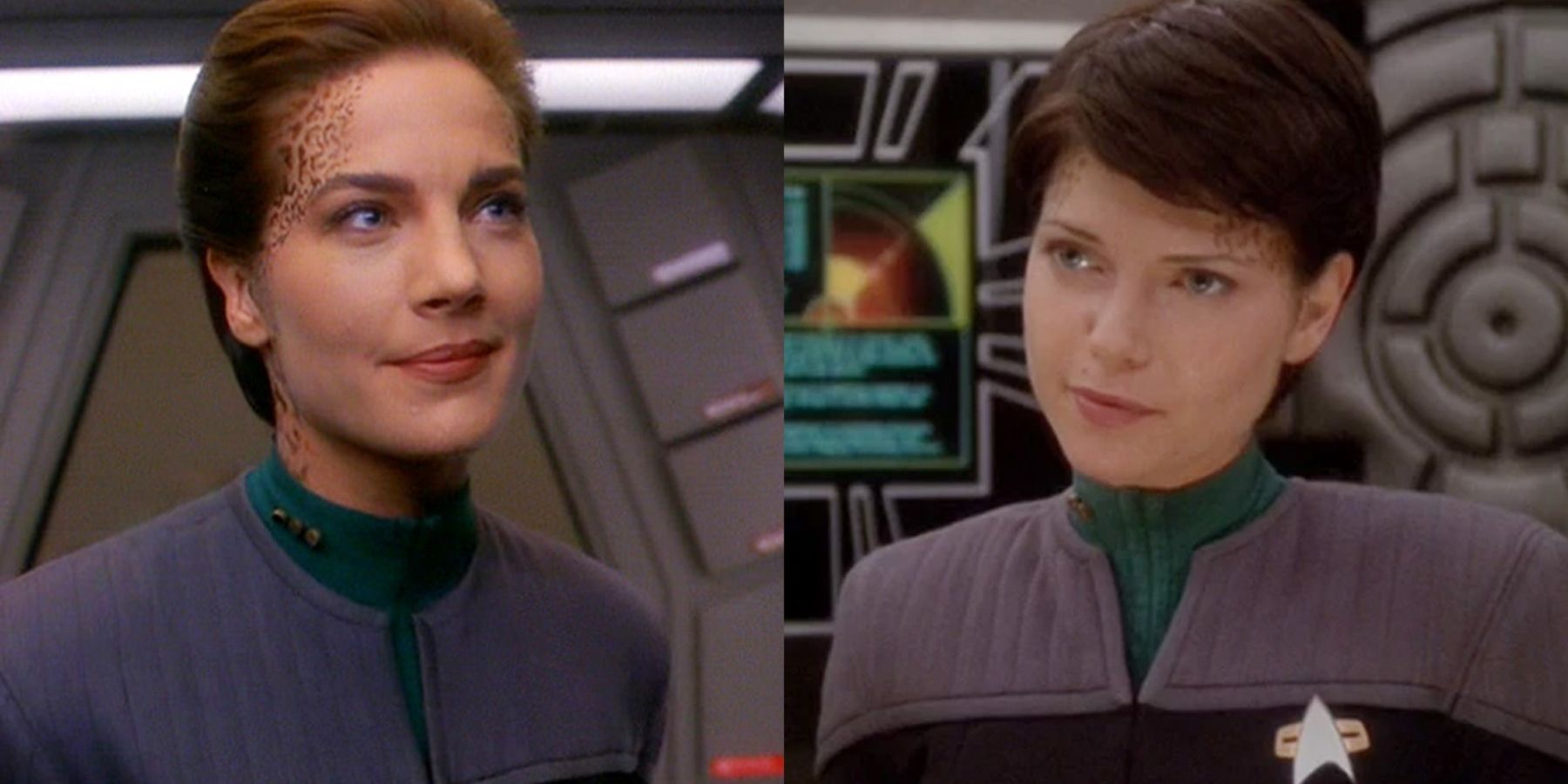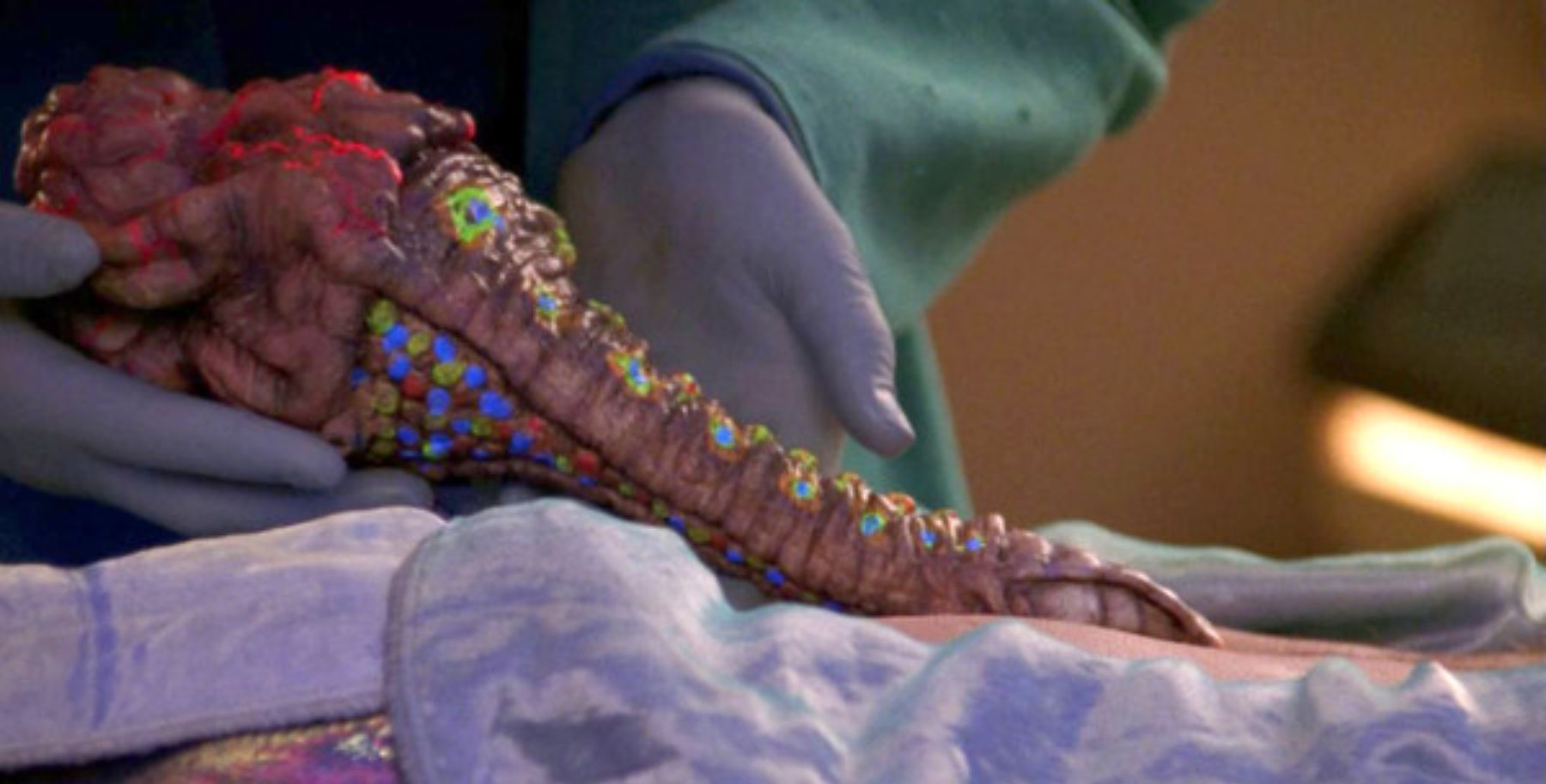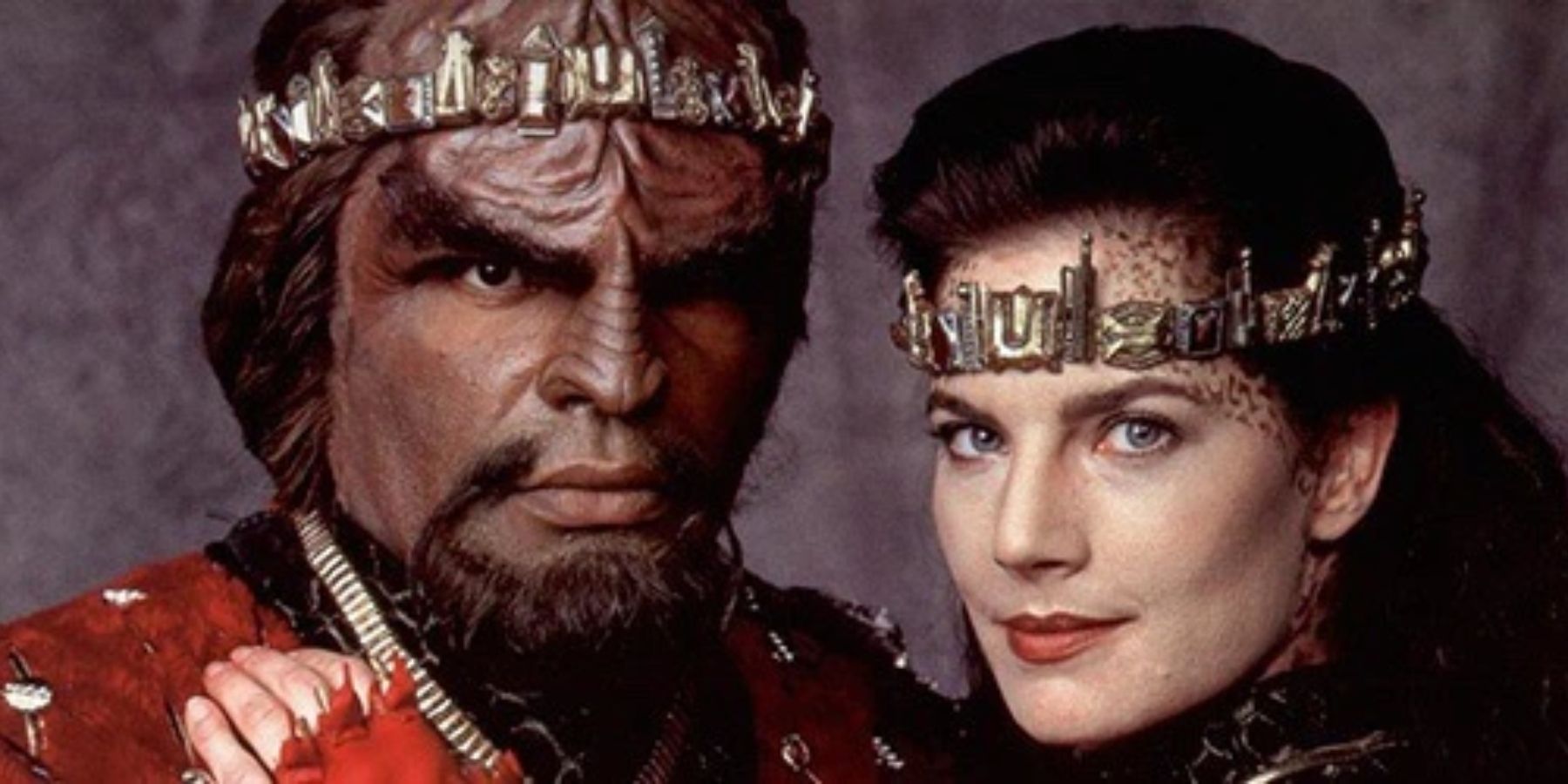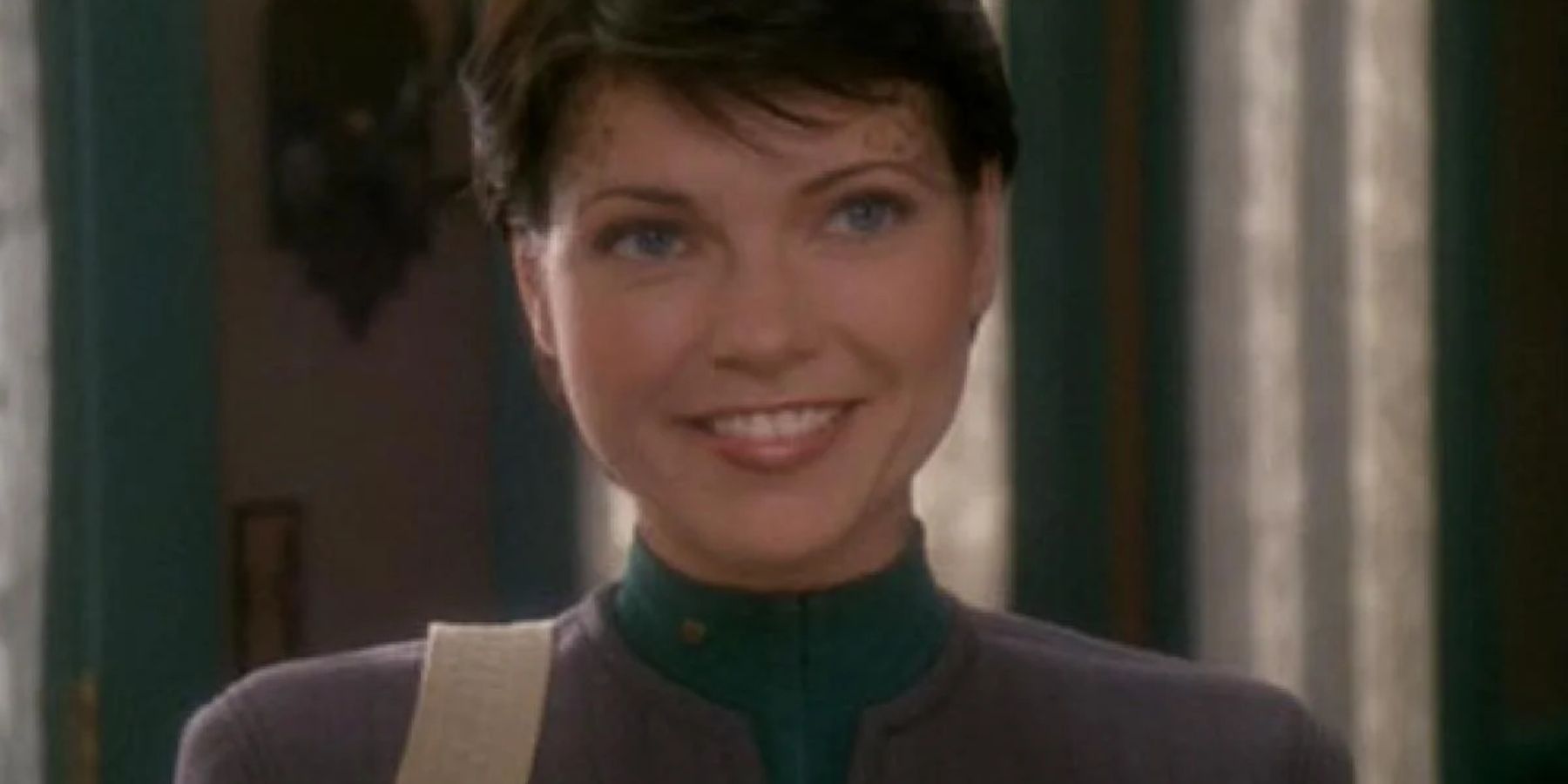Star Trek has given fans of the science fiction genre a host of different alien species over the years, a list that keeps growing with each new addition into the franchise. There are the well-known classics such as the Vulcans, stoic, logic-based beacons of civilization, as well as lesser-known entities that appear fleetingly, like the Andorians. One species that falls right in the middle is the Trill and the Symbionts that reside within them.
The Trill, like many species within the Star Trek universe, are humanoid in appearance, with two rows of dark blue spots that go down the entirety of their body. Interestingly, when the Trill first appeared in a Next Generation episode, their appearance was different, with a defined v-shaped forehead ridge (they did love their forehead prosthetics), changing to the blue-spotted variation during Deep Space 9. They did this because Paramount was concerned about obscuring Terry Farrell’s face (who played one of the main Trill characters) after spending “a long time seeking a beautiful actress.”
Despite their visual change, the symbiotic relationship introduced in Next Generation stayed the same, with a select few Trill having their bodies and personalities joined with a sentient symbiotic organism aptly called a Symbiont, essentially forming a new being who was a combination of the two. Their names reflect this join, the first name being the Trill’s birth name, the second being the Symbiont’s. For example, take Jadzia Dax, the heavily political Deep Space 9 Trill character mentioned above. Jadzia was the host body’s name, Dax was the centuries-old Symbiont.
While often seen as a parasitic relationship from outsiders, the joining of Trill and Symbiont was a great honor for the Trill. The Trill was governed by a group of individuals called the Guardians, both acting as an authoritative power, but also as protectors and carers for the Symbionts. When not joined with a host, Symbionts are rather helpless, slug-like creatures that could communicate telepathically, but needed to be cared for. As a Symbiont would live symbiotically with a host until the host's body died, it took many years for a Symbiont to return to the Guardians, meaning that, on average, there were only about 300 Symbionts available for the Trill to host every year. To prevent them from being fought over, and to keep the Trill from forcefully claiming Symbionts, there was circulated misinformation that only one in a thousand Trill could successfully pair with a symbiont, and that a grueling selection trial would help ween down those unsuitable. The reality was that most Trill could successfully pair with a symbiont, as long as they were strong enough to not have their personality overwhelmed.
The selection trials were overseen by the Symbiosis Commission, who would test the brightest and strongest Trill to ensure the Symbiont was to get the best possible Trill. These participants, although normally in their early 20s, were leading experts in their desired subjects. The Trill and Symbiont society, taking a leaf out of Bill Nye's book, valued scientific knowledge highly. Once a large portion of these Trill were rejected, they would come under the supervision of what was called a Field Docent, an existing Trill/Symbiont who would test their viability for the joining. This whole process raises some concerns with a lot of fans, who take issue with Star Trek’s representation of privilege. That is because this process completely rules out those from less fortunate backgrounds, who did not have the same access to education and opportunities as others, despite them potentially being the most compatible hosts.
Once bonded, the Trill/Symbiont dynamic duo share in their personalities and memories, the new host becomes aware of the years of memories, life, and skills the symbiont has lived. They become one entity, no consciousness taking precedence, simply merging. Due to this, in some sense the previous Trill/Symbiont is gone, only possessing half of what gave that person their individual nature. An example of this was Jadzia Dax. Upon the death of Curzon Dax, her Trill predecessor and mentor to fan-favorite Captain Sisko, her personality changed somewhat. She adapted new habits such as holding her hands behind her back, and an interest in various aspects of Klingon culture. The habits, memories, and experiences that helped form the symbiont's previous lives came through, acting as background elements to her personality. Half of her was the same, but there was a whole new personality in there that wasn't before. Sisko often referred to her as “old man” a nickname he gave Curzon Dax, who was, in part, still there in the form of Jadzia.
Jadzia did a lot during her time on Deep Space 9, such as marrying everyone's favorite Klingon: Worf. Their relationship grew over the series, blossoming into romance, marriage, and even them contemplating becoming parents. Tragically, in what was possibly the saddest episode of Star Trek produced in science-fiction history, Jadzia was killed in actions by the Cardassian Gul Dukat, a longtime series villain. Upon her death, the Dax symbiont was transferred to the Trill Ezri, becoming Ezri Dax (played by Nicole De Boer). Despite sharing the same symbiont, Jadzia and Ezri were completely different, Ezri presenting a wide-eyed and enthusiastic variation from Jadzia’s sultry confidence and charisma. Her presence posed a wonderful problem for her and Worf's relationship, Although Dax was still Dax, the body and half their personality had become someone new, and unfamiliar to what Worf had fallen in love with.
This brings to light another important element of Trill/Symbiont culture, that of Reassociation: when a Trill/Symbiont became re-romantically involved with previous hosts' partners. This was strictly forbidden by Trill culture, as a large part of their purpose in life, and their inherent drive, was to give the Symbionts new experiences over their millennia of life. Their hope was to experience everything they could possibly experience, rather than simply returning to lives they had already lived. Ezri already broke the rules to some degree by staying aboard Deep Space 9, but to rekindle Jadzia’s relationship with Worf would have resulted in her expulsion from Trill society.
The Trill offer audiences a refreshing take on the idea of killing off and then replacing a character like Tasha Yar. The shoes are being filled with an entirely new character, with their own personality and quirks, but at the same time, they have multiple series of history and character building. They are simultaneously someone known, and a complete stranger, something that the species repeatedly explores within the episodes.




